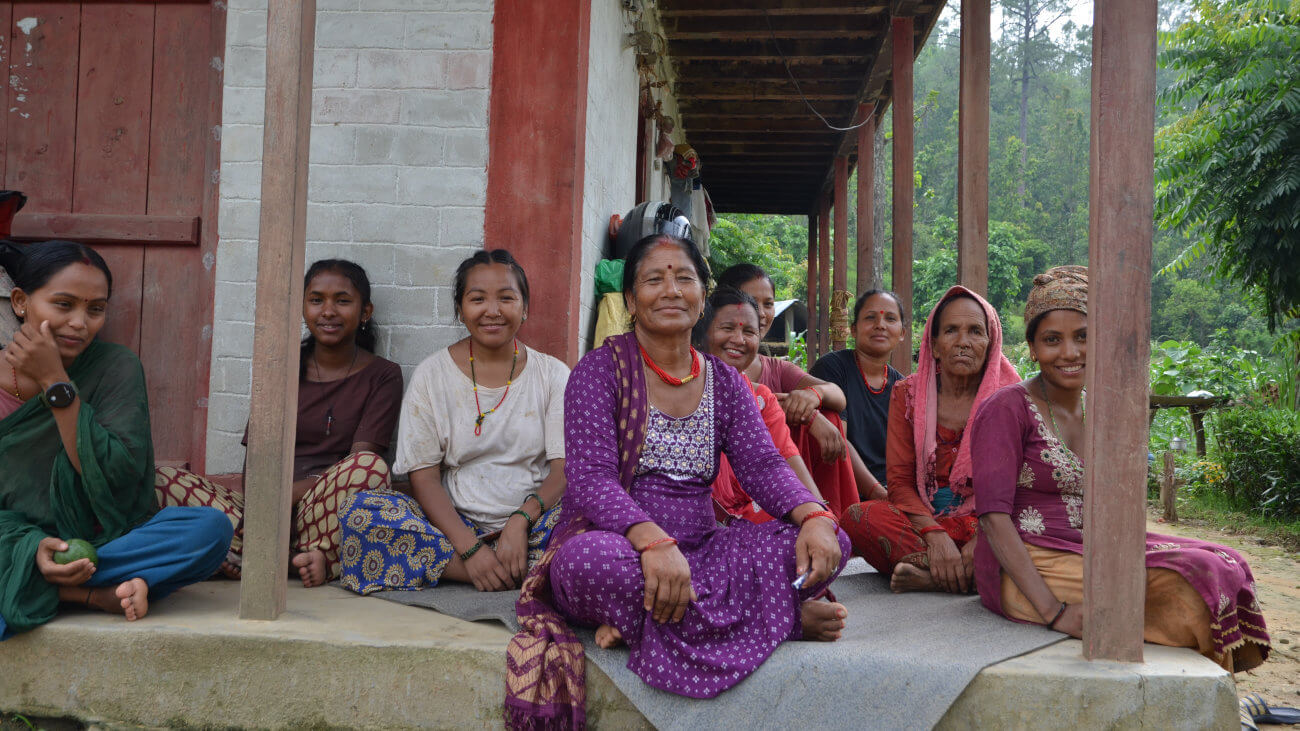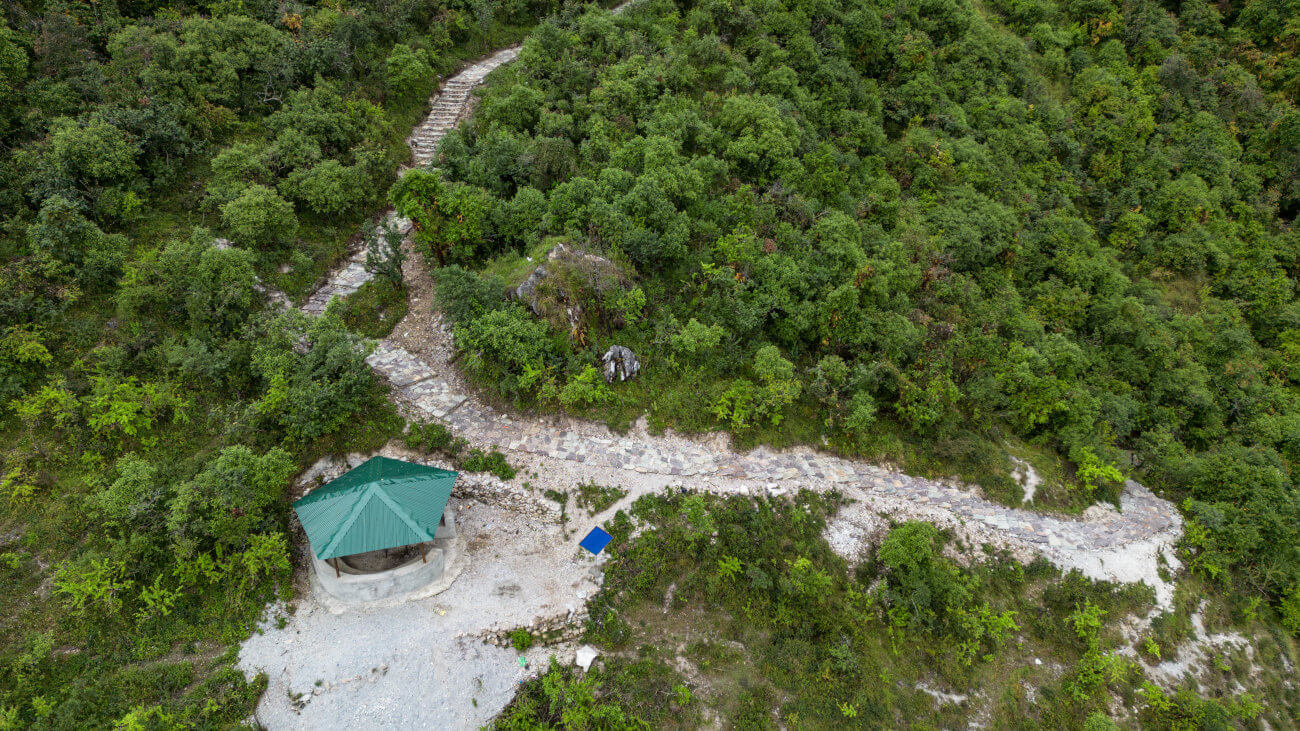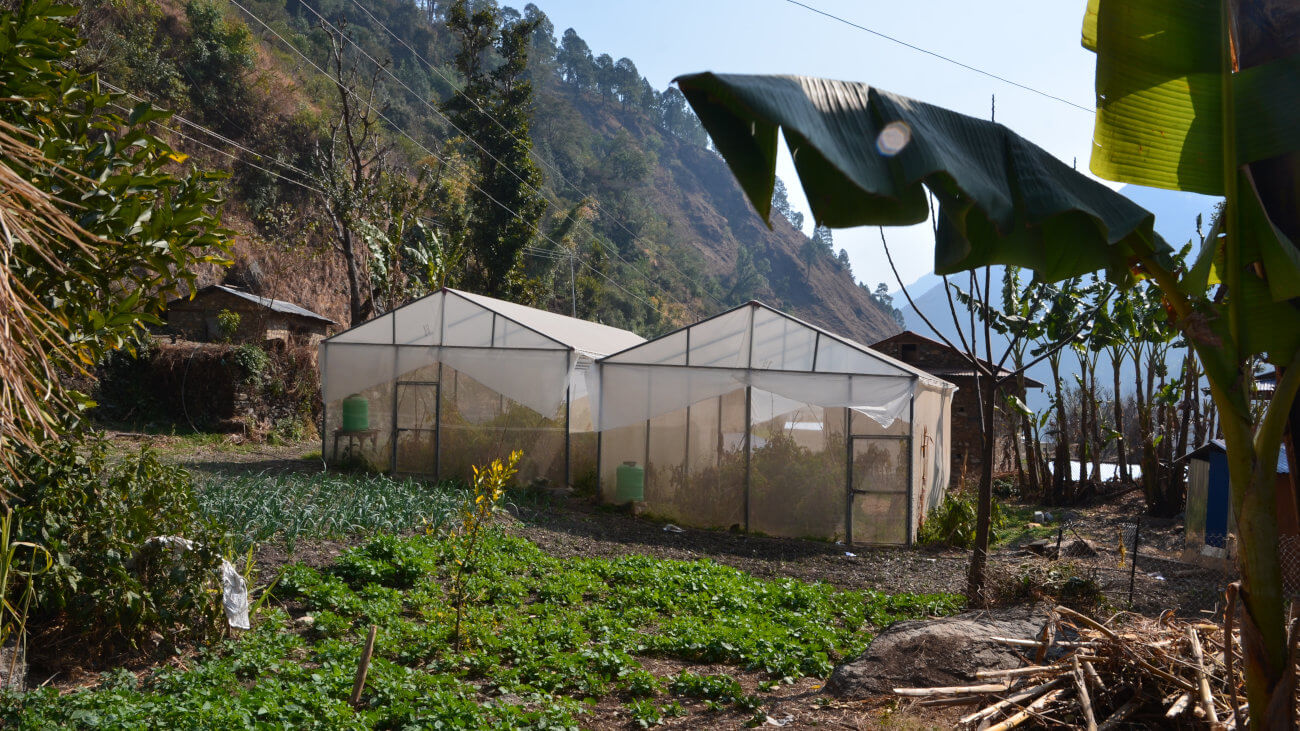Nepal Climate Change Support Programme – phase 2

Project overview
Remote communities under threat
“In monsoon season, some project sites were completely inaccessible for two to three months,” says project manager Duncan Tossell. “Even in mild weather, it could take several days trekking on foot to reach the most remote villages.”
Duncan was describing one of the challenges faced by NCCSP2, a £23M, five-year initiative funded by the UK Foreign, Commonwealth & Development Office (FCDO). It aimed to help over 550,000 vulnerable people in remote and rural communities adapt to rising temperatures, less predictable rainfall resulting in both droughts and flooding, and increased risk of landslides.
NCCSP2 supported 477 locally led climate-resilient infrastructure projects and initiatives across 42 municipalities (known as palikas) in Nepal’s most remote province, Karnali and Lumbini and Sudurpaschim. The programme’s success secured a commitment from the government of Nepal / Ministry of Forest and Environment to scale up the approach in all 753 local governments across Nepal.
Mott MacDonald was appointed by the FCDO in 2019 to provide technical assistance to the government of Nepal to implement NCCSP2.
NCCSP2 addressed four key problems for the FCDO and the Government of Nepal: climate finance absorption and utilisation while strengthening Public Finance Management (PFM); locally led adaptation and community engagement; knowledge and expertise in the climate sector and policy coordination across government. One of the programme’s key goals was to improve livelihoods and the resilience of those most vulnerable, and especially women and other climate vulnerable and marginalised people.
Women were strongly represented on the management committee users groups that defined and oversaw delivery and long-term management of resilience initiatives.

A systems approach
Located in western Nepal, Karnali faces the combined challenges of poverty and the increasing physical impacts of climate change – which are closely interconnected.
NCCSP2 focused on six types of project and leverage join-up thinking to deliver results:
Irrigation projects have a major impact both on farmers’ incomes and wider food security, moving away from rain-fed agriculture to more resilient and sustainable agriculture and livelihoods. Secure year-round supplies of water for irrigation increase the size of viable areas for cropping and enable farmers to harvest crops throughout the year.
Drinking water projects significantly reduce the time spent collecting water – particularly for women and girls. With easier access to clean water, communities have more opportunities to engage in education or economic activities, contributing to higher household productivity, income, and wellbeing. Drinking water projects were combined with the nature-based solutions for water source protection.
Flood control measures protect property, assets, and farmland, allowing year-round agriculture. Improved flood control also reduces the disruptive impact of flooding on households and businesses, prevents soil and crops from being washed away, and boosts agricultural productivity and protection of lives.
Slope stabilisation, employing nature-based solutions such as vegetated walls and bunds, reduces the probability and severity of landslides, protecting property and keeping roads open and sustainable supply chain of services.
Road improvements with better drainage help to keep roads passable, enabling transportation of goods and greater access to markets and supply chains in all weathers.
Training programmes equipped almost 2,000 government officials to identify climate risks and implement measures to improve climate resilience.
River training and reinforcement of river embankments protect farmland.
Tangible benefits
To protect against landslides in Aathbees palika, retaining ‘crib walls’ were constructed with bamboo. Shiva Bishwokarma, chair of the local user committee, says: “When we started working on the crib wall, we quickly realised that it was really effective.”
“It protected the land and created greenery when the bamboo grew. This prevented landslides. We feel a lot more secure now. I am very encouraged by the approach of this programme.”

Locally led adaptation
One of the distinctive aspects of NCCSP2 was the strong role local communities and institutions played in shaping which projects are prioritised and how they are implemented.
We collaborated with local, provincial and federal governments to ensure projects were aligned with Nepal’s LAPA process – a national framework to channel climate finance to local communities in a transparent and accountable way.
We supported local governments in strengthening their capacity to adopt a systematic approach to project planning, design and governance. This was reinforced through guidelines for integrating climate considerations into policies and processes.
We supported palikas in establishing user committees to lead project implementation. Women’s participation increased significantly, empowering them to play a stronger and more influential role – within committees and more broadly.
Vulnerable communities strengthened their resilience and ability to adapt to climate change by receiving training on how to analyse and apply climate data to inform evidence-based adaptation planning. These skills were then used to support climate-resilient farming and water management techniques.
NCCSP2 used an innovative co-financing model in which 80% of project costs covered by the programme, 10% by local government and 10% in kind by local communities.
Community engagement delivered powerful results. This inclusive approach, which actively involved local communities, was adapted from the Blue Gold flood defence and climate adaptation programme in Bangladesh, managed by Mott MacDonald for over a decade. It has proven to be an effective way to spread technical knowledge within local government and communities, foster local ownership, and increase buy-in – ultimately improving the sustainability of projects beyond the initial funding and implementation phase.
We are applying the lessons from NCCSP2 in other initiatives.
We have incorporated NCCSP2’s learning in other projects too. The approach pioneered on these projects is transferable to projects in other climate vulnerable regions.Dr Binod Devkota
Former Secretary at the Ministry for Industry, Tourism, Forest & Environment in Karnali
Spreading technical know-how
Providing technical support to communities in the remotest areas of western Nepal was challenging but critical for success, said Duncan.
“The best solution was to post experts in nine cluster offices providing technical assistance to 35 palikas. In each cluster office we had three specialists in climate and water, agriculture and forestry, and public finance.
“These teams carried out project site visits and provided technical support and guidance to palikas on project implementation, working through any challenges that arose.” The teams helped control project costs and quality.

Evidence based decisions
We developed several data-based tools, climate profiles and climate vulnerability assessment to help municipalities understand their climate risks and make evidence-based decisions. For example, 28 user-friendly hazard maps identified areas most at risk from floods, droughts and landslides. This helped to design and target interventions at the most vulnerable communities.
Rainfall and temperature data from Karnali’s 24 hydrology and meteorology stations were also used to create climate profiles of palikas, giving information on current and future climate trends, river flow and water access across 35 municipalities.
We also used the climate risk index to identify the most at-risk palikas based on the local hazard score, vulnerability and exposure. This was one of the criteria used to allocate annual climate finance to communities in greatest need.
We provided Technical Assistance to the Palikas for climate resilient project delivery as well as system strengthening at the local level especially for mainstreaming climate change adaption and climate data in the local policies, plan and programmes.Kiran Wagle
Team leader, Nepal climate change support programme
Financial accountability and value for money
NCCSP2 was among the few programmes in Nepal where international funding was channelled through government systems. Climate grants were disbursed to palikas by the federal treasury, with reimbursements made only when projects met agreed climate adaptation outcomes.
With our support, palikas produced quarterly financial reports detailing expenditure and demonstrating that climate adaptation projects had been carried out and completed to a high standard. These reports provided clear evidence that public funds were being used effectively and offered strong value for money.
This funding model that promoted transparency, accountability and cost-effectiveness. It also positioned palikas to access additional sources of climate finance in the future – such as the Green Climate Fund, the Adaptation Fund, the Loss and Damage Fund, and private sector financing.
NCCSP2 contributed to transformational change across the Government of Nepal and helped to promote inclusive and equitable development – empowering communities’ resilience and capacity to adapt to climate change. The programme’s lessons are now being scaled and applied across other FCDO initiatives to amplify and sustain positive impacts.
Subscribe for exclusive updates
Receive our expert insights on issues that transform business, increase sustainability and improve lives.



